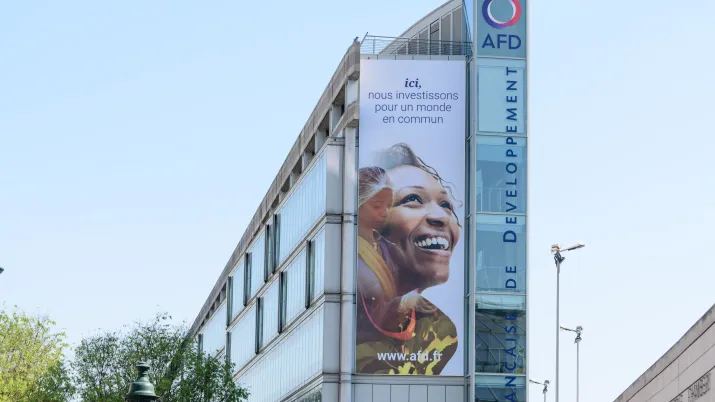Share the page
Finance in Common: the Global Investment that could Change the World
Published on

Throughout the world, there are some 450 public development banks, which account for one-tenth of global investment. How is that amount allocated? These are financial institutions of an altogether different order. What challenges do they face in making the best use of their investment dollars? We provide a few answers prior to the first global summit of public development banks, in Paris next month.
It’s a staggering amount: more than €2 trillion is invested each year by the 450 public development banks (PDBs) worldwide. This represents more than all of Sub-Saharan Africa's GDP combined. As one development player puts it, 10% of global investment per year “can get the whole system moving.”
PDBs on the move, just about everywhere
Each time a solar farm is built, a school opened, or a hospital inaugurated, PDBs feature prominently in the list of investors. And they don’t just invest in poor countries. In Europe, for example, development banks financed the Millau Viaduct in France, and the Channel Tunnel linking Britain to the European continent.
Read also: Finance in Common: First Ever Global Summit of Public Development Banks
These banks, for which profit is not the ultimate goal, encourage commercial banks to take initiatives in ventures they might normally avoid because the risk is too great, or the prospects for profit too slim. Agence Française de Développement (AFD) Group, France’s PDB, operates in 115 countries. Much of its focus is on Africa.
An instrument to promote positive impact
The role of PDBs has evolved over time and according to the world’s challenges. An increasing number of them, with AFD at the forefront, champion the financing of projects that promote gender equality, the fight against climate change, biodiversity, and health.
PDBs provide financing for projects whose nature and objectives are decided by financing applicants and partners (States, local authorities, companies). PDBs can nonetheless encourage applicants to propose projects that go beyond mere financial profitability, and benefit certain populations, cities or rural development, or the environment.
A common front
“We need a complete change of model at the global level, but there’s no magic wand or instant recipe for that,” says Régis Marodon, Sustainable Finance Advisor at AFD. That’s why the Finance in Common summit, to be held in Paris on November 10-12, aims to define mutual goals, common standards, and a single vision for public investment on a global scale. “The objective of this summit is to help lead us all in the same direction,” he says.
The 450 public development banks are expected to issue a joint statement – which would be a first – as part of an effort to concentrate their resources to make maximum impact.
Read also: Six Things to Know about Public Development Banks
There are nonetheless pitfalls on the path to signing any development project. While development initiatives are increasingly intent on protecting the environment, least developed countries need roads and transport infrastructure, which can be heavy in greenhouse gas emissions. Job creation, development and environmental safeguards are often hard to reconcile – not least in the context of complicated geopolitics which tend to prioritize some sectors over others.
What’s more, certain Sustainable Development Goals (SDGs) are still not taken into account, and they are too often neglected by the private sector. The World Investment Report 2020, produced by the United Nations Conference on Trade and Development (UNCTAD), shows that international flows from the private sector toward four of the 10 key SDGs have not increased substantially since the targets were adopted in 2015. UNCTAD urges greater investment in renewable energy, water and sanitation, food and agriculture, and health care.
Projects must also be better evaluated, and over longer periods extending beyond immediate implementation.
Time to act – now!
What we saw after the 2008 financial crisis has been confirmed by the Covid-19 pandemic: PDBs are the backbone of a world undergoing a multifaceted upheaval. To cope, “they have to reinvent themselves,” warns Régis Marodon. “The global health crisis and its consequences have led to a tendency for the economic and social emergency to take precedence over the environmental aspect. It’s crucial to link these two aspects and make them work together, not one to the detriment of the other.”
Should such a wide range of public development banks unite their financial might in pursuit of common development goals, one can only imagine the results.


